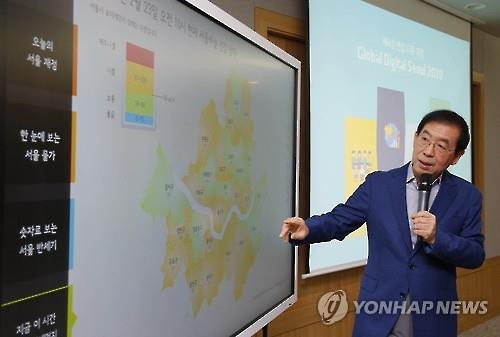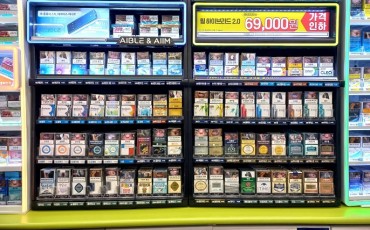
The Seoul Metropolitan Government has selected ‘diginomics’ as a new strategy to boost city growth. With the city currently losing its growth engine, and with the population dwindling and expected to fall under 10 million, diginomics will be counted on to boost growth, create jobs and make the lives of Seoul citizens easier through technology. (Image : Yonhap)
SEOUL, Feb.23 (Korea Bizwire) – The Seoul Metropolitan Government has selected ‘diginomics’ as a new strategy to boost city growth. With the city currently losing its growth engine, and with the population dwindling and expected to fall under 10 million, diginomics will be counted on to boost growth, create jobs and make the lives of Seoul citizens easier through technology.
Diginomics is a new term combining the terms ‘digital’ and ‘economics’, and refers to an economic focus on the development of digital industries.
Seoul mayor Park Won-soon expressed his determination to invest a total of 460.5 billion won in policies and businesses related to diginomics over the next five years with the announcement of the ‘Seoul Digital Plan 2020’.
A new entity called the Seoul Digital Foundation will be launched in May, and will serve as a think tank as well as a platform to invigorate diginomics.
The Gaepo Digital Innovation Park, which will open in September, will train 330,000 workers that will contribute to digital convergence and integration businesses focusing on Internet of Things (IoT).
Some changes that citizens will feel right away will be free Wi-fi service, the expansion of regions with IoT, integrated parking information services, and integrated welfare information systems.
From 2017, all public spaces including subways and buses will have free Wi-fi. The service will be operated by the government and private enterprises. Security issues will be addressed in cooperation with the national government.
Currently, the Bukchon area is designated as a test area for IoT services, but by 2020, the addition of 100 areas with various themes such as culture, tourism, safety and transportation will turn the city into a giant Living Lab.
A new integrated parking information system will provide the citizens with parking information such as location and vacancy status. The local government plans to provide real-time information for 550 public and private parking lots by 2020.
Until now, welfare information was separately managed by independent organizations. However, an integrated welfare information system will manage welfare information as a whole. After the revitalization of the ‘moving regional offices’ in 2018, 424 regional offices will provide one-stop welfare services.
The number of citizens who participate in running the city through the smartphone application ‘M Voting’ will be increased to one million people by 2020.
Mayor Park explains that European cities are solving problems by adopting innovative systems that allow citizens to participate, and also enable the sharing of public information. “As Seoul has the world’s best IoT infrastructure, and has ranked first in the Global City e-Government Index for six years in a row, we can take the lead in adopting digital technologies in our lives,” he said.
By Francine Jung (francine.jung@kobizmedia.co.kr)






